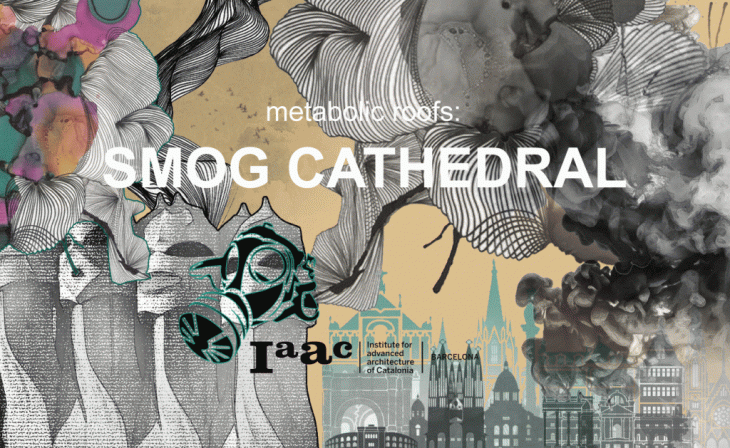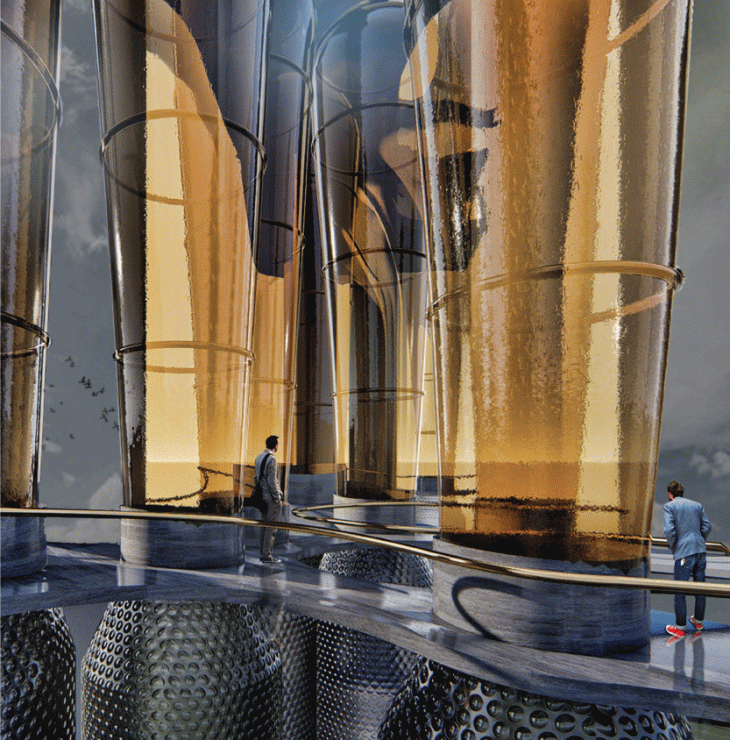The Smog Cathedral project is an investigation ecologically driven technologies in construction, environmental preservation and material science culminating in the conception of a metabolic architectural intervention on Gaudi’s casa Mila.Sited in the central region of Barcelona and on a structure of great historical and architectural significance, the Casa Mila is transformed into an air remediation and conditioning structure. By drawing on opportunities presented by the unique site, namely its natural passive remediation strategies and abundant footfall, the intervention becomes as much environmentally performative in giving back clean air to the city as it is a beacon for awareness of the state of our ecological landscape.
The building works by compressing air through the proposed lift shaft, which is the released into a chamber where its filtered with water.It is then follwed by filteration using HEPA filters in the second chamber. The cleansed air this then released into the atrium and hence the atmospehere. The contaminated air is then segregated into NO2 and O3 which is strored in the collection chambers.Through prototyping, the processes of the metabolism are investigated.
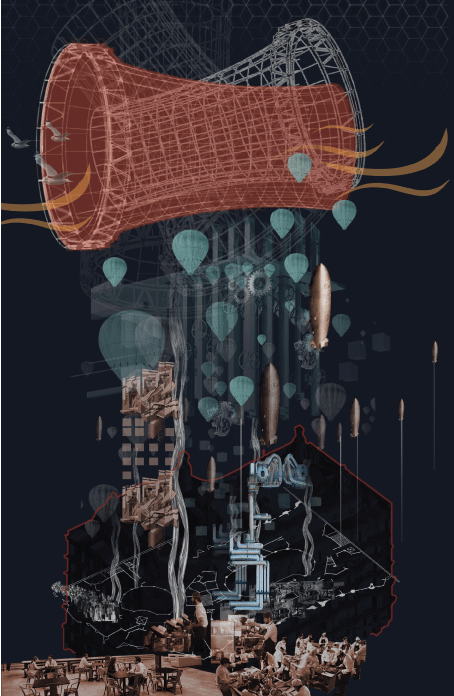
Context
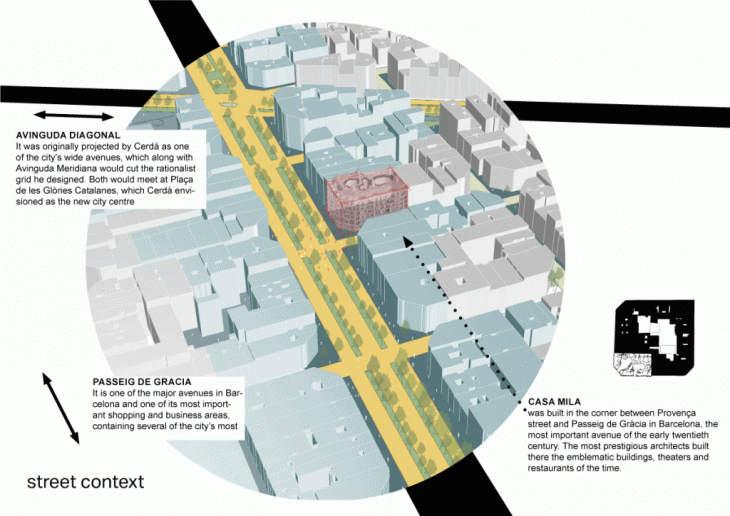
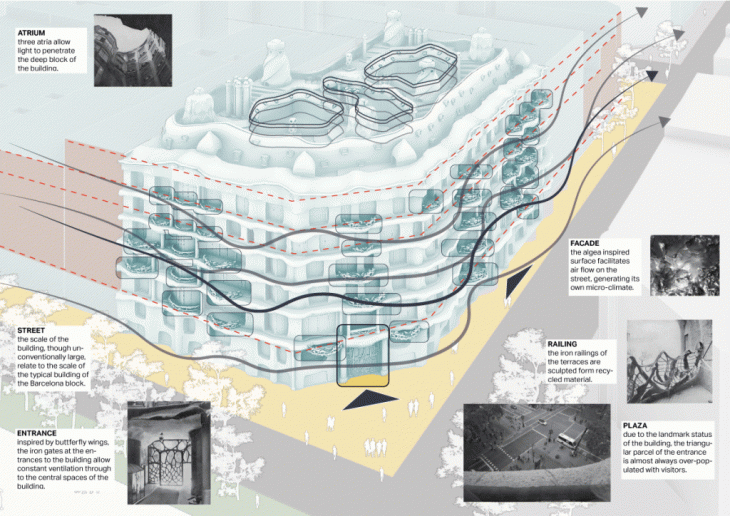
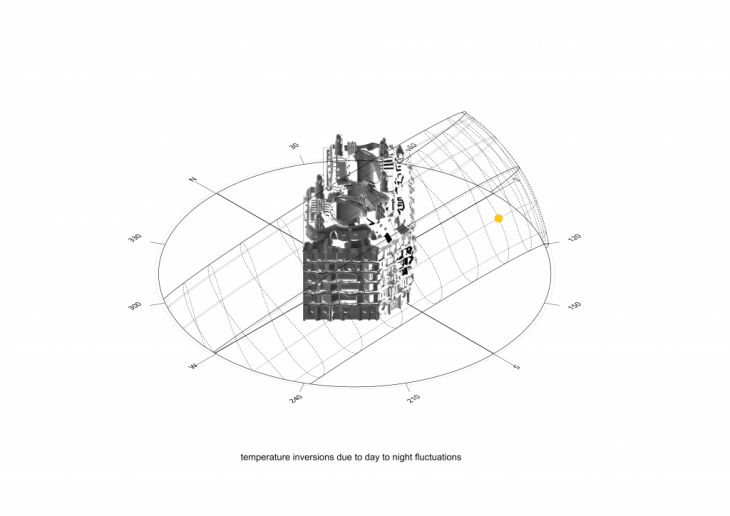
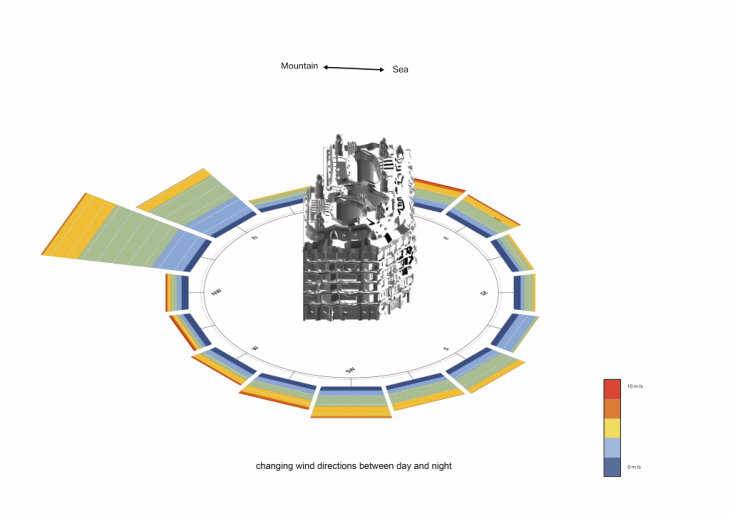
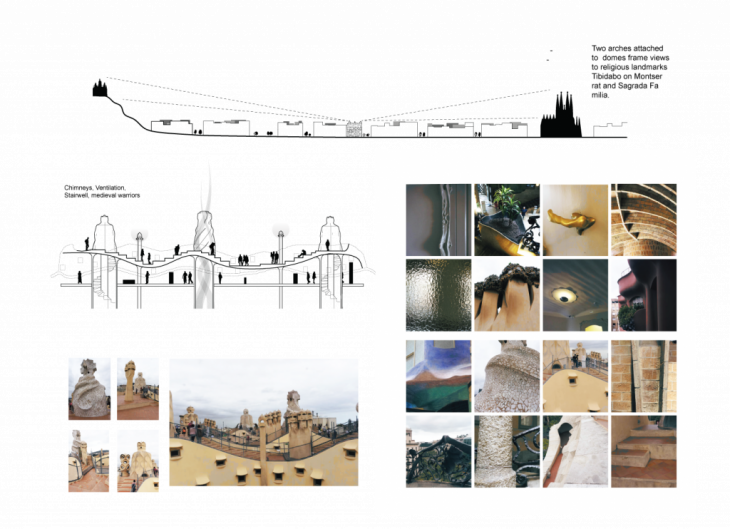
roof topography
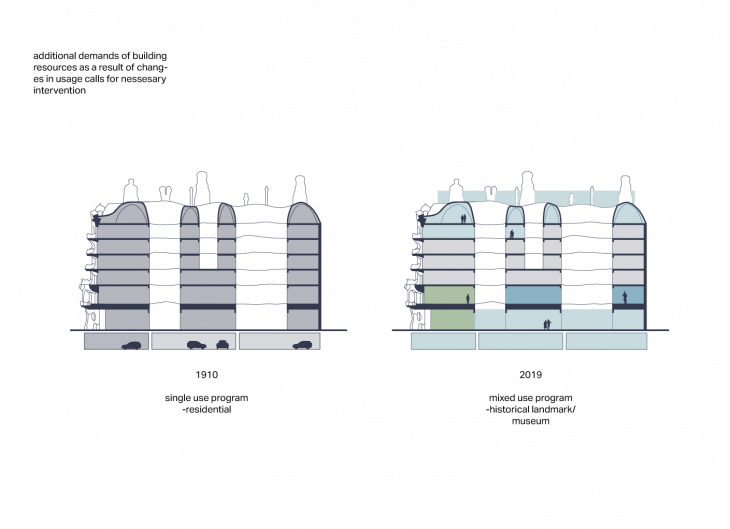
Occupancy analysis
Strategies and Technologies:
” The two most harmful and abundant air pollutants in Barcelona are nitrogen dioxide (NO2), an irritant gas that attacks the lungs and is mostly produced by internal combustion engines suspended particulates under 10 microns in diameter (PM10 – 2.5). This is the size range of particles that efficiently transport into the human lungs and constitute the second most important contribution to global warming. Such composite particles might form in coastal cities and are expected to have a much larger climate effect than soot alone. “
–Ecology. Urban Planning, Infrastructures and Mobility, Ajuntament de Barcelona
1. HEPA Filtration
2. Wet Scrubber
3. Visualization as a Communicatory Medium
” Yellow Dust is based on research conducted by Dr Calvillo which demonstrated that visualization is more effective than standard methods in conveying information about air pollution as it evokes stronger reactions that are more likely to lead to positive behaviour change such as cycling instead of taking the car. “
-Faculty of Social Sciences, University of Warwick
Proposal
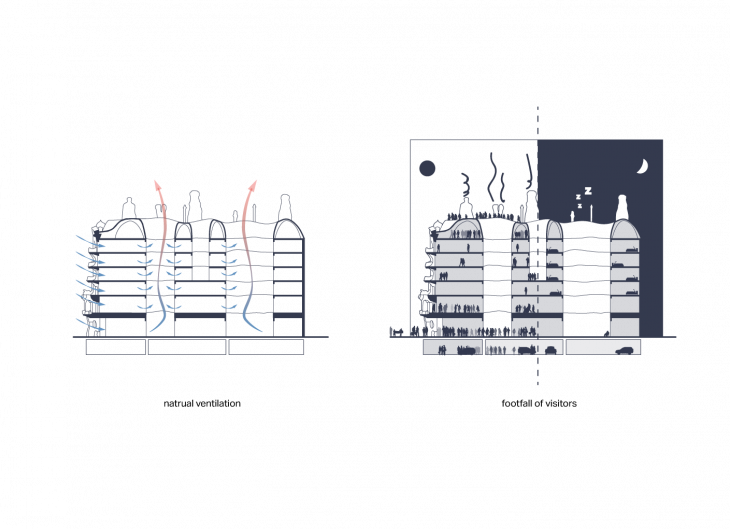
Site Opportunities
Architectural
Becon that visualizes air pollution
Particles collected corresponds to footfall – making man accountable
Visual quantifying visible at city scale
Physical
Vertical transporation shaft as air driving mechanism
Air remediation chambers – Partical and Chemical filtration
Collection Vessels + visitor pathway
Metabolism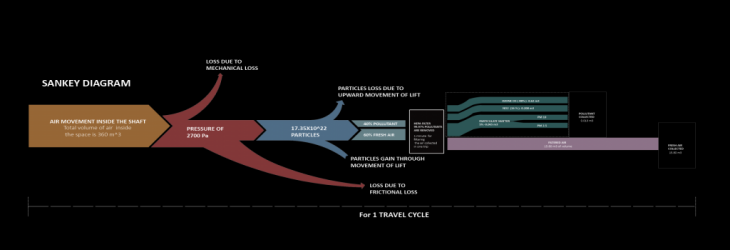
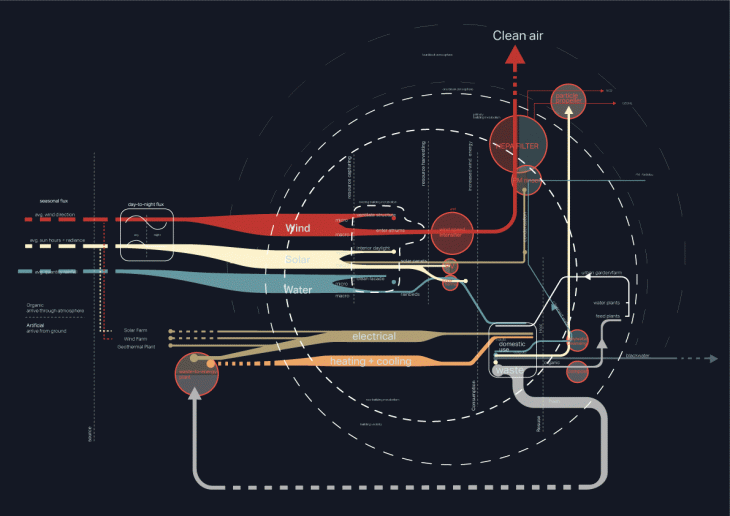
Aspirational Metabolism

Focused Metabolism
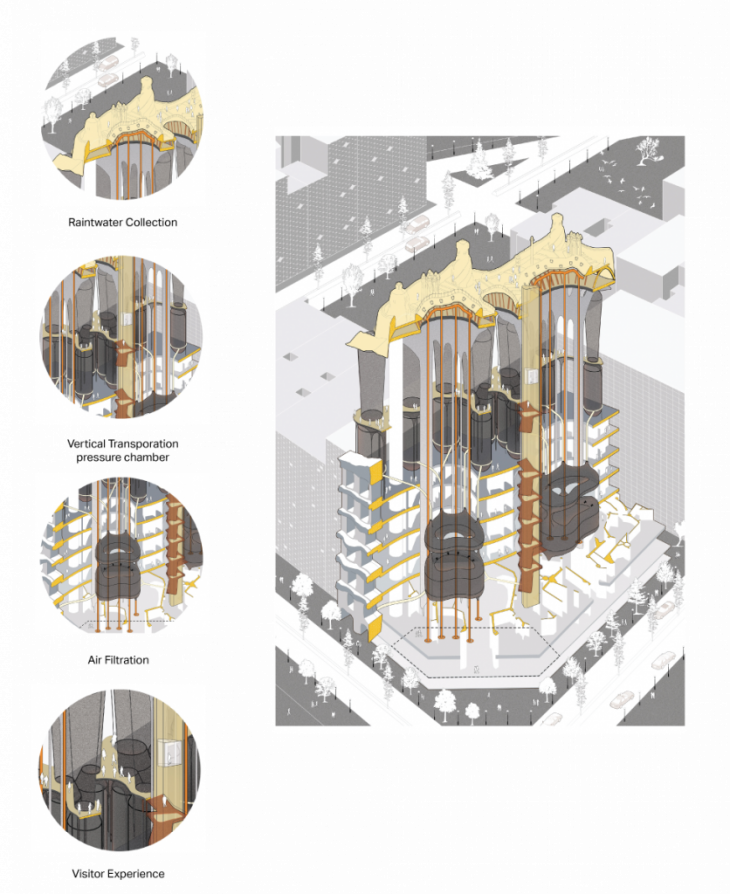
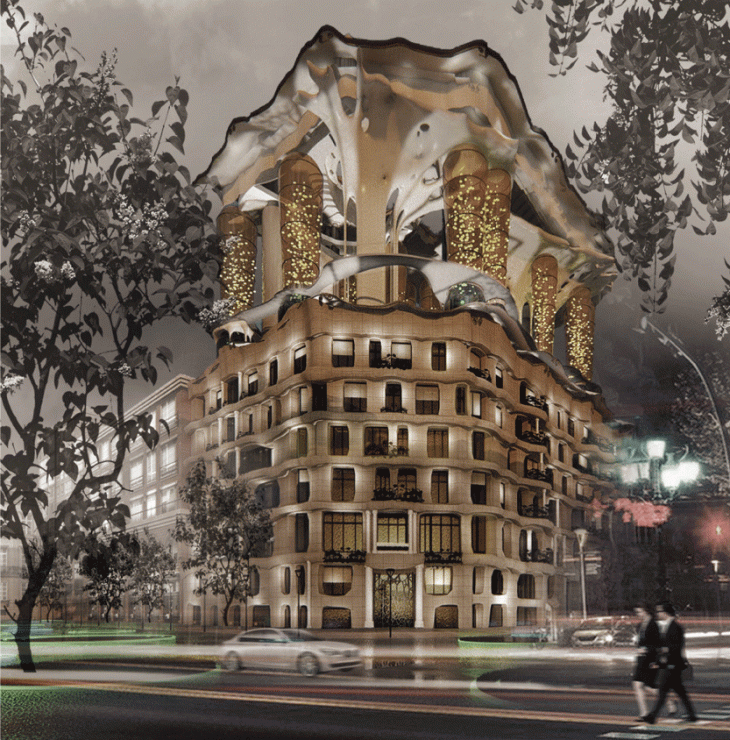
View of proposal from Passeig de Gràcia
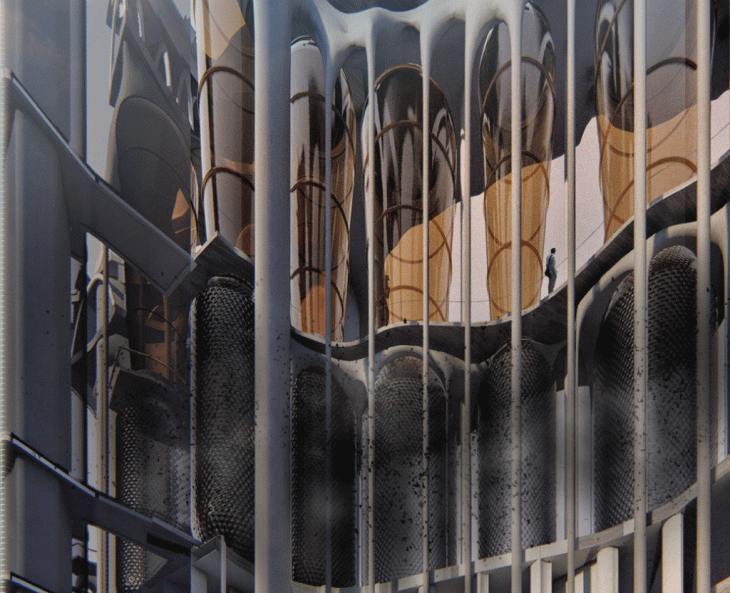
Atrium
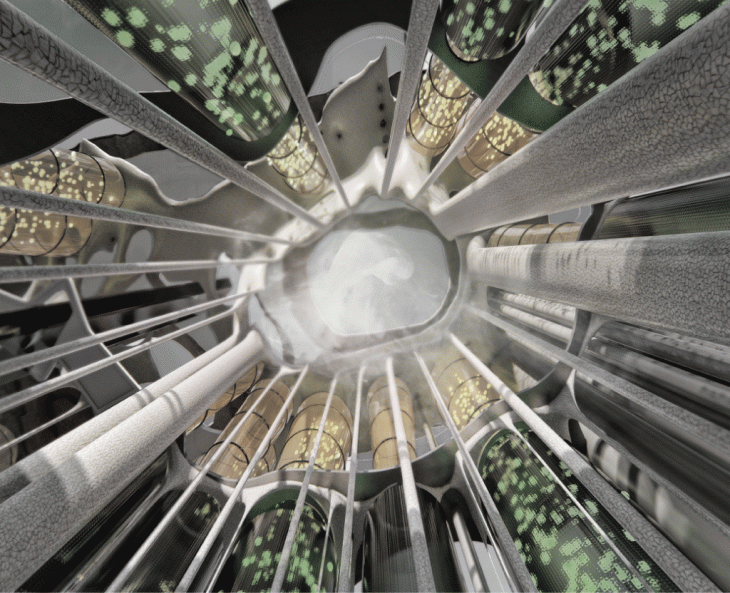
Atrium view 2
Prototype
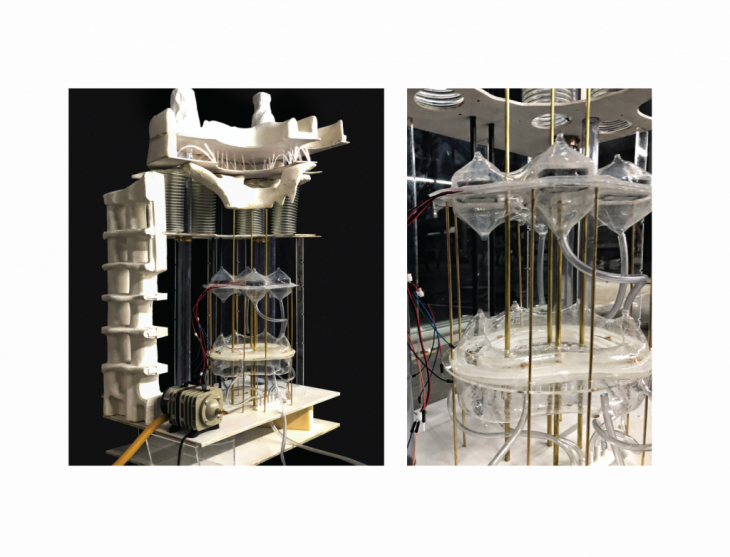
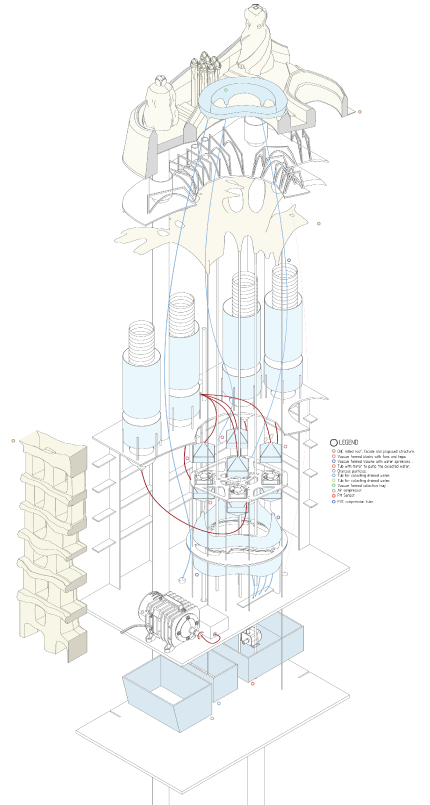
Credits
Introductory Studio G3 Metabolic Iconic Roofs // IaaC, Institute for Advanced Architecture of Catalonia Developed at Master in Advanced Architecture in 2019/20
TUTORS: Javier Peña Galiano, Oriol Carrasco // ASSISTANT: Yigitalp Behram // STUDENTS: Robyn Houghton, Suyash Chandrakant Sawant, Roshin Anthoora Valappil
works cited
Ajuntament de Barcelona. “What Is Happening to the Air We Breathe.” Air Quality, 3 Jan. 2020,
https://ajuntament.barcelona.cat/qualitataire/en/qualitat-de-laire/what-happening-air-we-breathe.
Faculty of Social Sciences, University of Warwick. “Raising Public Awareness of Air Pollution with New Ways of Visualising Data.” Visualising Air Pollution, 22 Mar. 2018, ttps://warwick.ac.uk/fac/soc/impact/visualisingairpollution/.
